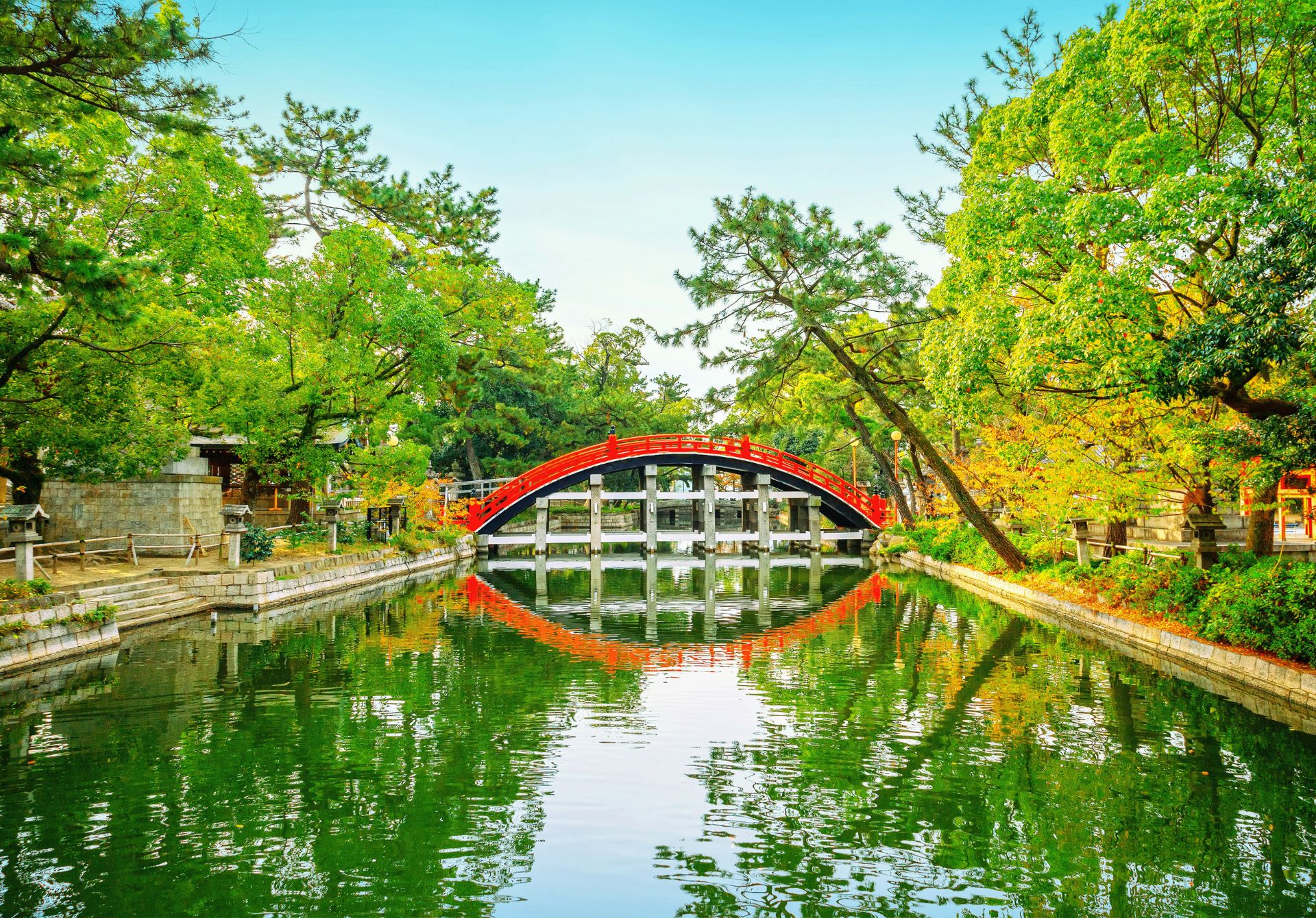Hey there, fellow travel enthusiasts! If you’re planning a trip to Osaka and looking for something off the beaten path, boy, do I have a treat for you. Let’s talk about Sumiyoshi Taisha, one of Japan’s oldest and most significant Shinto shrines. Trust me, this place is a total vibe, and I’m about to spill all the tea on why you absolutely need to add it to your Osaka itinerary.
What’s the Big Deal About Sumiyoshi Taisha?
Alright, let’s break it down. Sumiyoshi Taisha isn’t just your average shrine – it’s got some serious street cred in the world of Japanese spirituality and architecture. Here’s why it’s such a big deal:
- Founded way back in 211 AD (yeah, you read that right)
- One of only three shrines in Japan that claim to predate the arrival of Buddhism
- Dedicated to the Sumiyoshi sanjin (three Sumiyoshi kami) and Empress Jingū
- Features a unique architectural style called Sumiyoshi-zukuri
- Designated as a National Treasure of Japan
The Architectural Marvel: Sumiyoshi-Zukuri Style
Okay, architecture nerds, this one’s for you. The Sumiyoshi-Zukuri style is like the OG of Japanese shrine design. It’s characterized by:
- Straight roofs (no fancy curves here)
- Forked finials called chigi
- Five horizontal billets known as katsuogi on the roof
- A tamagaki fence surrounding the inner sanctuary
What’s cool is that this style predates the influence of mainland Asian architecture on Japan. It’s like stepping into a time machine and seeing what ancient Japanese buildings looked like before all the cultural mixing.
The Instagram-Worthy Spots You Can’t Miss
Let’s be real – we all want those killer shots for the gram. Sumiyoshi Taisha has got you covered with some seriously photogenic spots:
1. Sorihashi Bridge (The Arched Bridge)
This bright red, super steep bridge is the money shot. It’s said to represent the path from the earthly realm to the heavenly one. Pro tip: go early in the morning to catch it without the crowds.
2. The Main Hall
With its straight roof and ancient vibes, the main hall is a photographer’s dream. Try to capture it from different angles to really show off that unique Sumiyoshi-Zukuri style.
3. Stone Torii Gate
This massive stone gate marks the entrance to the shrine. It’s particularly stunning when lit up at night, so consider an evening visit if you can.
Festival Fever: Time Your Visit Right
If you want to level up your Sumiyoshi Taisha experience, try to time your visit with one of their amazing festivals. Here are a couple you shouldn’t miss:
- Otaue Shinji (Rice Planting Festival): Held in June, this festival features a traditional rice planting ceremony. Expect colorful costumes, ancient rituals, and a chance to see living history.
- Sumiyoshi Matsuri: This is the big one, folks. Held from July 30th to August 1st every year, it’s one of Osaka’s largest festivals. Think massive crowds, food stalls galore, and a chance to see the mikoshi (portable shrines) being paraded through the streets.
Practical Tips for Your Visit
Alright, let’s get down to the nitty-gritty. Here’s what you need to know to make your visit to Sumiyoshi Taisha smooth sailing:
- Getting there: Take the Nankai Main Line to Sumiyoshi Taisha Station. It’s about a 5-minute walk from there.
- Admission: Free! (But donations are always appreciated)
- Opening hours: The shrine grounds are open 24/7, but the office hours are from 6:00 AM to 5:00 PM.
- Best time to visit: Early morning for fewer crowds, or during one of the festivals for maximum cultural immersion.
- Dress code: While there’s no strict dress code, it’s respectful to dress modestly as it is a place of worship.
Beyond the Shrine: Exploring the Neighborhood
Once you’ve soaked in all the Sumiyoshi Taisha goodness, take some time to explore the surrounding area. The Sumiyoshi area is like a little slice of old Japan right in the heart of modern Osaka. Here are some spots to check out:
- Sumiyoshi Park: A beautiful park right next to the shrine, perfect for a leisurely stroll or a picnic.
- Nagai Park: Home to Yanmar Stadium Nagai, it’s a great spot for sports enthusiasts.
- Local Izakayas: Try some Osaka specialties like takoyaki or okonomiyaki at one of the many local eateries.
Wrapping It Up: Why Sumiyoshi Taisha Should Be on Your Osaka Must-Visit List
Alright, let’s bring it home. Sumiyoshi Taisha isn’t just another tick on your Osaka checklist – it’s a journey through time, a feast for the eyes, and a deep dive into Japanese culture. From its ancient architecture to its lively festivals, this shrine offers a unique glimpse into the heart and soul of Japan.
Whether you’re a history buff, an architecture enthusiast, a photography lover, or just someone looking to experience the “real” Japan, Sumiyoshi Taisha has something for everyone. It’s a perfect balance of spiritual significance and Instagram-worthy beauty, all wrapped up in one easily accessible package.
So, when you’re planning your Osaka itinerary, do yourself a favor and carve out some time for Sumiyoshi Taisha. Trust me, your social media feed (and your soul) will thank you. Happy travels, and may the spirit of Sumiyoshi guide your way!

